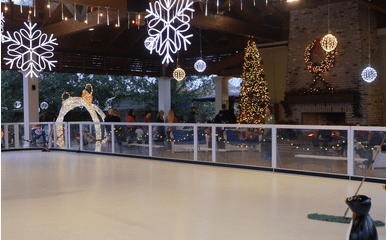Uncategorized
Sustainable Workout Wear
Get in touch with nature and get in shape without paying for a gym membership or waiting in line.
But you’ll want to dress in a way that keeps you from overheating and sweating to death. Several men and women prefer going out for workouts. That’s why men’s and women’s workout gear is getting popular among them.
Keep reading to learn about activewear and the best clothes for eco-friendly workouts.
Just what is “eco-friendly” physical activity?
What we call “green exercise” refers to any physical activity done in a natural setting, such as a park or a wooded area.
Some of them, like park runs, you may even be familiar with. Green exercise has been shown to improve both self-esteem and mood, in addition to the obvious physical benefits. Anything from mountain biking and rock climbing to yoga and trail running is possible.
You don’t need any special skills to do green exercise, and you have a lot more freedom than you would in a traditional gym setting.
One obvious benefit is the opportunity to relax and take in the beautiful scenery.
When you say “workout gear,” what do you mean?
Activewear (also known as sportswear) is a specialized type of clothing made to facilitate physical activity, such as by wicking away sweat and maintaining a comfortable temperature.
Most athletic apparel is constructed from synthetic materials because they allow for better ventilation and cooling during exercise.
Some examples of items that could be considered part of an activewear ensemble are:
- Baselayers
- Leggings
- T-shirts with technical details
- Shorts
- Headwear, Handwear, and Footwear
Thinner garments are worn as undergarments.
The term “base layer” refers to the layer of clothes worn next to the skin for insulation or ventilation. To keep you dry and comfortable while on the go, base layers and thermals are designed to drain away perspiration as they insulate you from the cold.
Thermal wear is adaptable, as it can be found in a wide range of fabrics and designs to meet the needs of a wide variety of environments and pursuits. The bottom or the top can be the base layer.
A thermal top is an absolute must for any green workout that takes place outside, regardless of the time of year. Short-sleeved shirts and vests are optimal for physical activity in the summer and other warm months. Clothing with long sleeves is typically the most practical option during the colder months.
Leggings
Leggings, often called baselayer bottoms, are incredibly flexible because they can be worn with or without shorts. If you plan on starting your walk or climb in the summer when temperatures are high, you can wear them either on their own or as a base layer under shorts.
Compression shorts, a type of base layer bottom, aid in heat retention and decrease muscle soreness in athletes. The bottoms of a base layer are ideal for use as an extra layer of warmth while outdoors or as an independent layer while jogging, especially in warmer weather. Leggings are perfect for any activity since they keep you warm and dry.
Athletic and technical tees
Lightweight synthetic materials are common in active t-shirts because they aid in wicking and cooling. The moisture control technology is built into active shirts and vests, making them superior to regular t-shirts. Because of this, you can be confident that you’ll stay dry and comfortable throughout your workout because it is the greatest fabric for wicking moisture quickly and drying quickly.
Polyester, the most popular fabric, wicks sweat away from the skin and promotes rapid evaporation. Many of these running shirts also feature anti-bacterial characteristics, which are only an odor control treatment, in addition to their quick-wicking and drying abilities.
Shorts
Activewear shorts may be shorter than usual and made from lightweight material to facilitate airflow while wearing them. Shorts that are shorter than usual are common in the running and fitness industries. This is, so you have more freedom of movement while doing things like jogging or climbing.
You should avoid attire that restricts your range of motion. Synthetic activity shorts with secure zippered pockets are a must-have. Many athletic shorts, in addition to being quick-drying, also have reflective detailing to increase visibility, which is especially helpful for early mornings or late evenings.
Shoes, mittens, and socks
These three items, especially socks, might be crucial but are frequently disregarded when it comes to physical activity. It is impossible to overstate the significance of wearing quality socks, whether running or otherwise exercising.
The health of your feet will greatly benefit from this. Good running socks should be seamless and made to wick away sweat and moisture. Blisters are uncomfortable and can be avoided if friction is reduced.
Winter exercise calls for the obvious addition of hats and gloves to your gear. Because during physical activity, blood is redirected from the extremities to the working muscles; this is especially true during running. They are lightweight, waterproof, and comfy, so you can keep on moving. High-tech textiles can be found in a variety of headwear designed for the cold and the sun.
Points to Think About…
Prioritize practicality
Activewear is meant to be worn during physical activity. Therefore it should be comfortable and flexible. Similar to the sizing discussion, this is related to the question of fit. T-shirts can be restrictive if they are too snug. Make sure you can move freely in the clothing you plan to wear for exercise.
Choose your textiles wisely.
Wet cotton is far less pleasant to wear than dry cotton. You shouldn’t train in cotton since it absorbs moisture, making you heavy and prone to chafing. Technical textiles are made to be snag-resistant, moisture-wicking, and skin-friendly.
Do your best to ensure that it will hold you up.
To properly support your muscles, your activewear should be compressive where they need it. This means planning for the tasks at hand and identifying potential areas of weakness.
Do some shopping around.
Don’t just try it on and then buy it in the fitting room. Do some circling. Make use of it for a variety of acrobatic moves. Try on the clothes and see how they perform. Because of this, making a good choice will be less of a hassle.
Ideally, it would be completely imperceptible.
Your workout clothes, especially your base layers, should feel like an extension of your skin. When you put your sportswear on, you shouldn’t have any constraints in movement. Nothing overly restrictive or restricting.
























